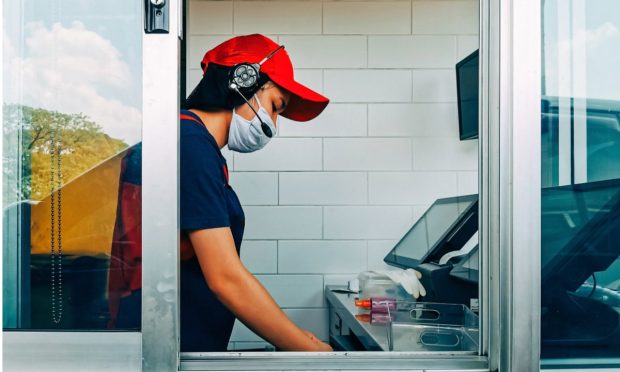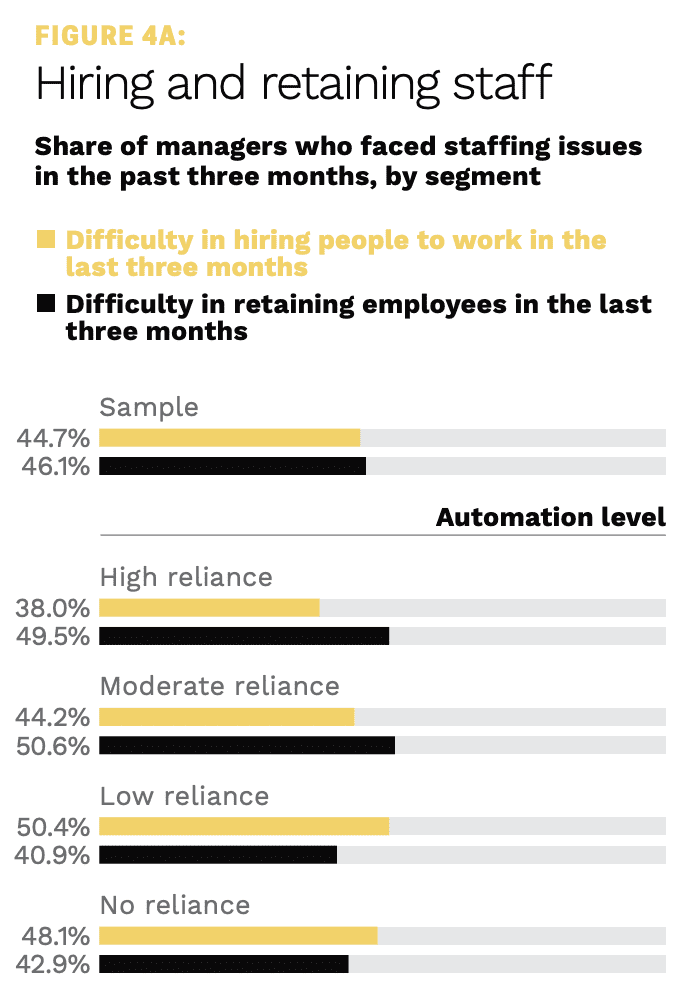Automation-Powered Restaurants Struggle to Retain Employees

Restaurants may be turning to automation as the solution to their labor challenges, but in fact, restaurants powered by automated technologies have more difficulty retaining the employees they do need than their non-automated counterparts.
By the Numbers
The 2022 edition of PYMNTS’ “Restaurant Readiness Index,” which was created in collaboration with Paytronix and drew from a survey of more than 500 quick-service and full-service restaurant managers across the country, revealed that 50% of restaurants that are highly reliant on automation and 51% of restaurants moderately reliant on automation reported difficulty in retaining employees in the last three months.
In contrast, a lower share (46%) of the overall sample said the same.
Learn more: More Than Half of Restaurants Depend on Digital Sales, Despite Uptick in On-Premises Orders

Why It Matters Now
In California, restaurants might turn to automation to offset the costs of a new bill that was just signed into law by Governor Gavin Newsom, which will set higher wage requirements for fast food workers and enact new workplace standards.
The law — which may raise the minimum wage up to $22 next year, among other measures — affects brands that have 100 or more locations nationwide, have “limited or no table service,” require customers to pay before receiving their meals and primarily serve food that was prepared in advance of customers’ orders.
These restaurants may find that, as they implement new automated technologies, it may become more difficult to retain the employees they continue to rely on.
